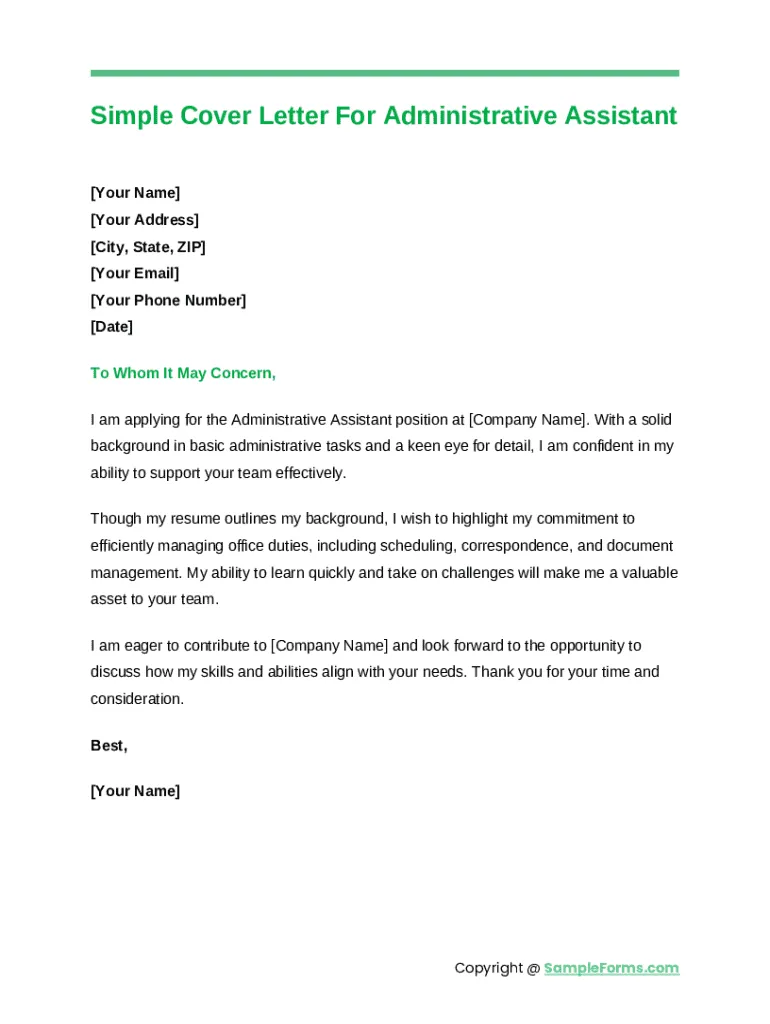Understanding the Importance of a Cover Letter
In the competitive landscape of job applications, a well-crafted cover letter can be the key to unlocking your dream administrative assistant role. It’s often the first impression you make on a potential employer, and it provides an invaluable opportunity to showcase your personality, skills, and enthusiasm beyond the confines of your resume. A cover letter allows you to tell a compelling story about yourself, connecting your experience with the specific requirements of the job and the needs of the company. This guide is designed to equip you with the knowledge and tools to create an impactful cover letter that sets you apart from other applicants.
Why a Cover Letter is Crucial for Admin Assistants
For administrative assistant positions, a cover letter is particularly crucial. These roles require a high level of interpersonal skills, organizational abilities, and attention to detail – qualities that are often best demonstrated through a personalized cover letter. Unlike a resume, which provides a factual overview of your qualifications, a cover letter lets you articulate why you’re the perfect fit for the specific job and company. It gives you the chance to demonstrate your communication skills, your understanding of the company’s needs, and your genuine interest in the position. By highlighting relevant experience and skills, while also showcasing your personality and enthusiasm, you can make a strong case for why you should be invited for an interview.
Highlighting Your Key Skills and Experience

A successful cover letter for an administrative assistant role should prominently feature your key skills and relevant experience. This is your chance to shine a spotlight on the abilities that make you a valuable asset to any organization. Make sure to mention the specific skills that are listed on the job description and highlight how you have used these skills in the past. This is also the place to show that you have relevant experience. You should focus on achievements. Instead of just listing your previous job responsibilities, describe how you exceeded expectations or brought value to your previous employers.
Essential Skills for Administrative Assistants
Administrative assistants need to have a broad range of skills. You must highlight these skills in your cover letter. These include but are not limited to excellent communication (both written and verbal), strong organizational skills, proficiency in office software (like Microsoft Office or Google Workspace), time management, attention to detail, and problem-solving abilities. Consider what is relevant to the job you’re applying for, such as experience in scheduling appointments, managing calendars, handling correspondence, or supporting executives. The more specific you are in your descriptions, the better.
Showcasing Relevant Experience on Your Cover Letter
When describing your experience, focus on achievements rather than simply listing responsibilities. For example, instead of saying, ‘Managed phone calls,’ you could write, ‘Streamlined phone operations by implementing a new call routing system, reducing missed calls by 15%.’ Use numbers and data to quantify your accomplishments whenever possible. Also, be sure to tailor your experience to match the specific requirements of the job. By emphasizing the most relevant aspects of your background, you will make a stronger case for your candidacy. Remember, your cover letter is a tool to demonstrate your ability to solve the company’s problems.
Structuring Your Administrative Assistant Cover Letter
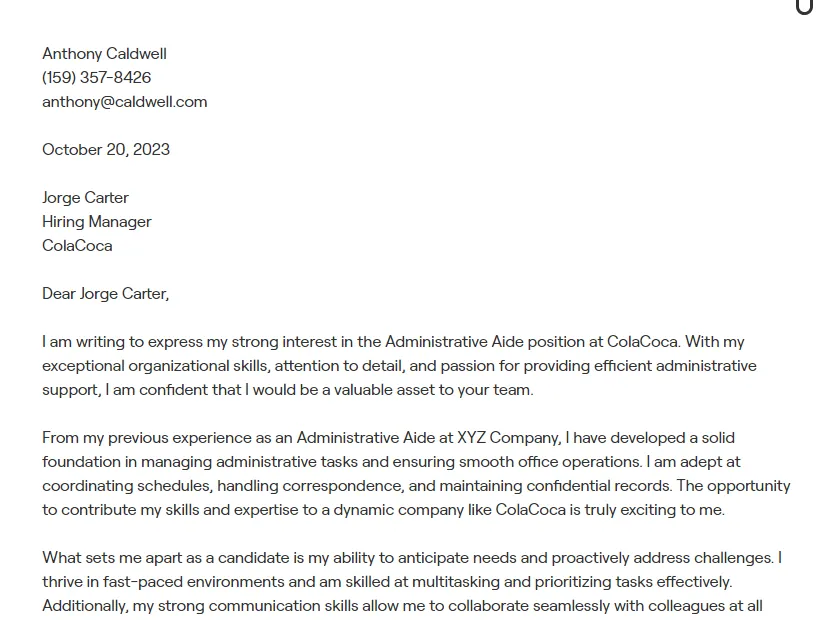
The structure of your cover letter is as important as its content. A well-organized cover letter is easy to read and allows the hiring manager to quickly understand why you are a good fit for the role. By including a clear header, an engaging opening, body paragraphs that highlight your achievements, and a strong closing, you can make a cover letter that captures the reader’s attention from the start. Remember to format your cover letter in a professional and polished manner. Do not use long paragraphs or excessive technical jargon. Keep the document clear and concise, and use a professional font.
Header and Contact Information
Start your cover letter with a professional header that includes your contact information. This should include your name, address, phone number, and email address. You should also include the date, and the hiring manager’s name, if you know it, along with the company’s name and address. Always use a professional email address. The header should be at the top of the page and aligned to the left or center. If you are sending your cover letter via email, you can include your contact information at the bottom of the email, below your signature.
The Opening Paragraph Engaging the Reader
The opening paragraph is your opportunity to capture the reader’s attention. Start with a strong statement that immediately indicates why you are writing and what position you are applying for. Mention where you found the job posting. State your enthusiasm for the role and the company. You can also include a brief summary of your relevant experience or a compelling achievement. Avoid generic openings. Instead of starting with a simple ‘I am writing to apply…’ try something that will spark the reader’s interest. For instance, you could start by highlighting a specific skill or accomplishment that aligns with the job description.
Body Paragraphs Highlighting Achievements
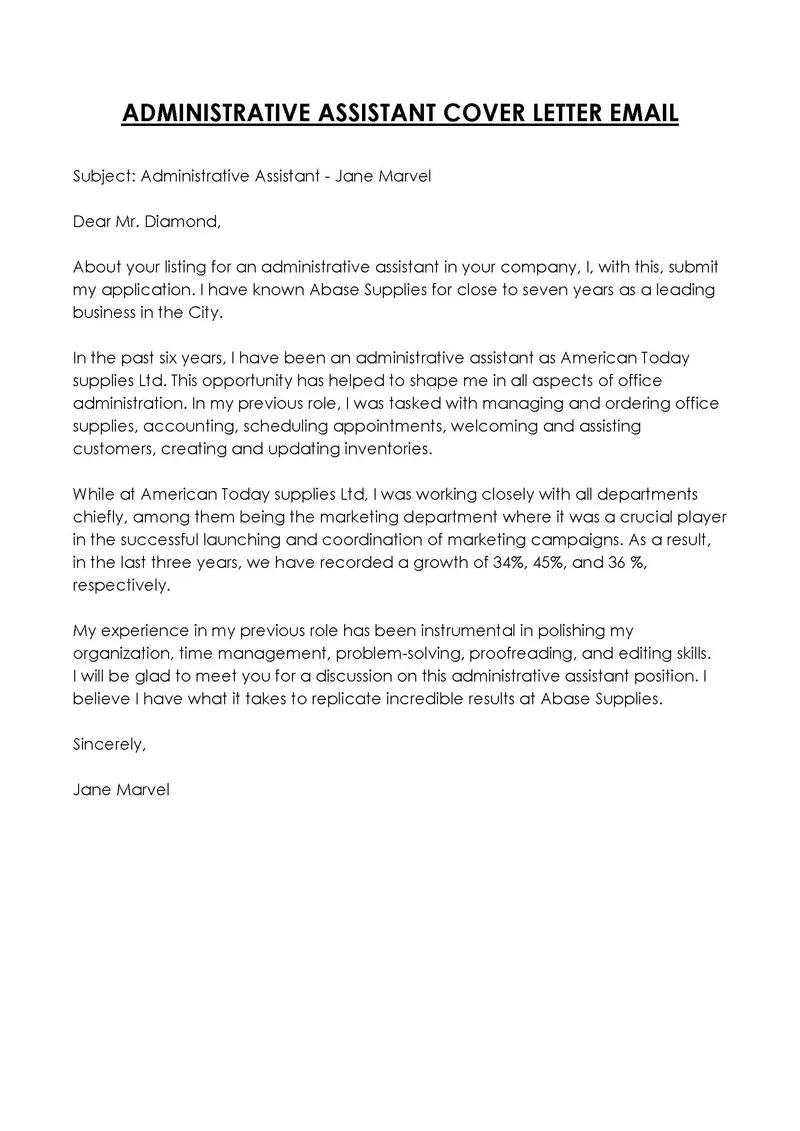
The body of your cover letter is where you will showcase your achievements and demonstrate your qualifications. Use one or two paragraphs to describe your most relevant skills and experience. Provide specific examples that highlight how you have used these skills in previous roles. Back up your claims with quantifiable results whenever possible, using numbers and data to demonstrate your success. Remember to align your experience with the job requirements. Use keywords from the job description to show that you understand the company’s needs and expectations. This part of your cover letter should be concise and focused, only including information that is relevant to the role.
The Closing Paragraph and Call to Action
The closing paragraph should reiterate your interest in the position and summarize your key qualifications. Express your enthusiasm for the opportunity and emphasize why you are a good fit for the company. Include a clear call to action, such as requesting an interview. Make it easy for the hiring manager to take the next step. Include a thank you for their time and consideration. Use a professional closing such as ‘Sincerely’ or ‘Best regards,’ followed by your full name. Before submitting your cover letter, check again to make sure your contact information is correct.
Tailoring Your Cover Letter for Each Job
One of the biggest mistakes that job applicants make is sending out generic cover letters. To maximize your chances of success, you must tailor your cover letter to each specific job you apply for. This involves researching the company, reviewing the job description carefully, and customizing your letter to highlight the skills and experiences that are most relevant to the position. This approach shows that you are genuinely interested in the role and that you have taken the time to understand the company’s needs. In short, personalize your cover letter to show you have carefully considered the role and the organization.
Researching the Company and Position

Before you start writing your cover letter, research the company and the specific position you are applying for. Visit the company’s website to learn about their mission, values, and recent activities. Read the job description carefully to understand the required skills, responsibilities, and expectations. Look for keywords and phrases that can be incorporated into your cover letter. Understanding the company’s culture and the specific needs of the role will help you tailor your letter to match the employer’s requirements. Make sure you understand the industry as well. The more you know, the more effective your cover letter will be.
Customizing Your Letter to Match Job Requirements
Once you’ve researched the company and the position, it’s time to customize your cover letter. Highlight the skills and experiences that directly align with the job requirements. Use keywords from the job description and give specific examples of how you have demonstrated those skills in the past. Tailor your language and tone to match the company’s culture. Show that you understand the challenges the company faces and how you can contribute to their success. By doing so, you will demonstrate your genuine interest in the role and increase your chances of getting an interview. A generic cover letter is a missed opportunity.
Common Mistakes to Avoid
There are several common mistakes that can undermine the effectiveness of your cover letter. These can range from typos and grammatical errors to generic and uninspired content. By avoiding these pitfalls, you can ensure that your cover letter makes a positive impression on the hiring manager. Pay close attention to your writing style and format. Ensure that your cover letter is polished, professional, and tailored to the specific job and company you are applying for. A little extra effort can significantly improve your chances of landing an interview. Remember, your cover letter is a reflection of your professionalism and attention to detail.
Typos and Grammatical Errors
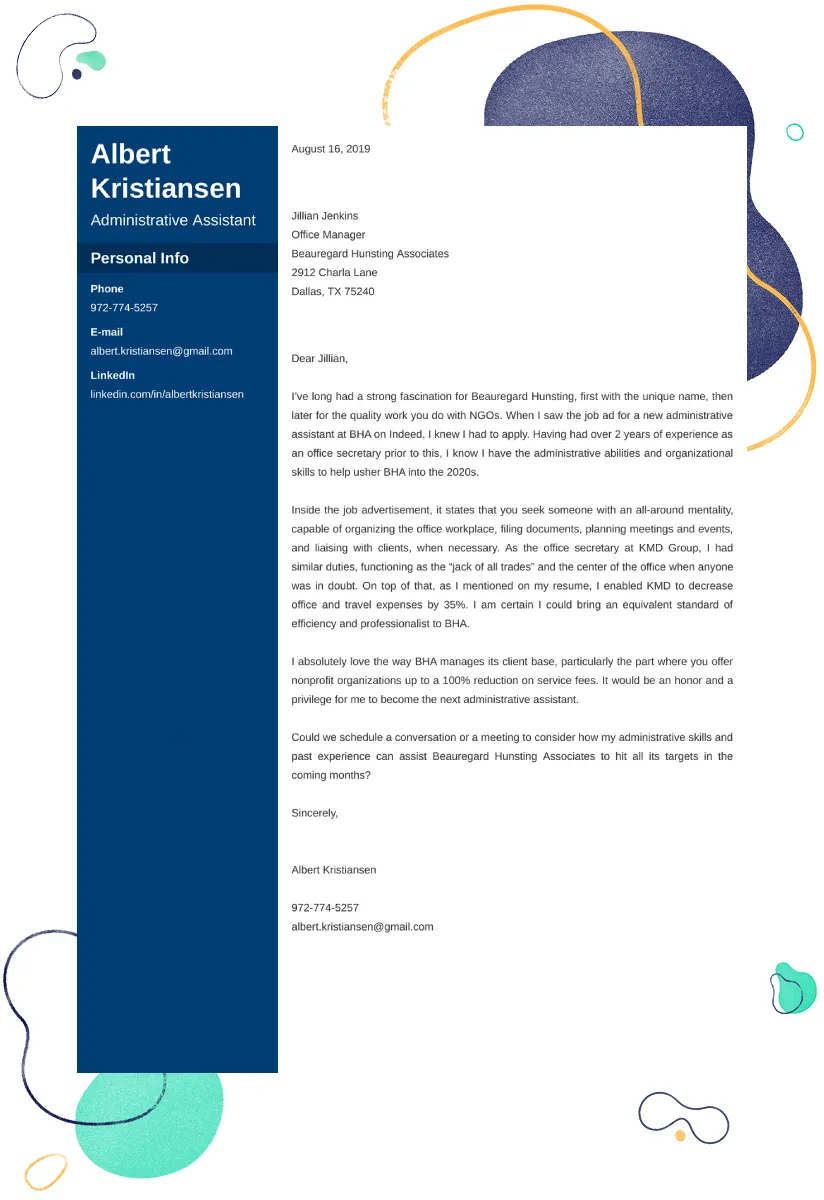
Typos and grammatical errors are a major turn-off for hiring managers. They suggest a lack of attention to detail and a lack of professionalism. Always proofread your cover letter carefully before submitting it. Use a spell checker and grammar checker to catch any mistakes. However, do not rely on these tools alone. Read your cover letter aloud to catch any errors that you might miss. It is also a good idea to have a friend or family member proofread your cover letter. A fresh pair of eyes can often spot errors that you might have missed. Proofreading is essential to ensure your cover letter is error-free.
Generic and Uninspired Content
Generic cover letters that could be sent to any company or position are unlikely to make a strong impression. Avoid using generic phrases or simply repeating information from your resume. Instead, tailor your cover letter to the specific job and company. Highlight your most relevant skills and experiences, and explain why you are interested in this particular role. Show that you have taken the time to research the company and understand its needs. A personalized cover letter will demonstrate your enthusiasm and increase your chances of getting an interview. Remember, your cover letter should show the hiring manager why you are the best fit for the role.
Formatting and Design Best Practices
The formatting and design of your cover letter can have a significant impact on how it is received. A well-formatted cover letter is easy to read and makes a professional impression. Choose a clean and simple layout, and use a professional font. Avoid using overly fancy or distracting formatting. The goal is to make your cover letter look polished and easy to read. Remember to proofread the formatting as carefully as you proofread the content. A well-formatted cover letter is a reflection of your professionalism and attention to detail. Your cover letter’s appearance should be as impeccable as its content.
Font and Layout Guidelines
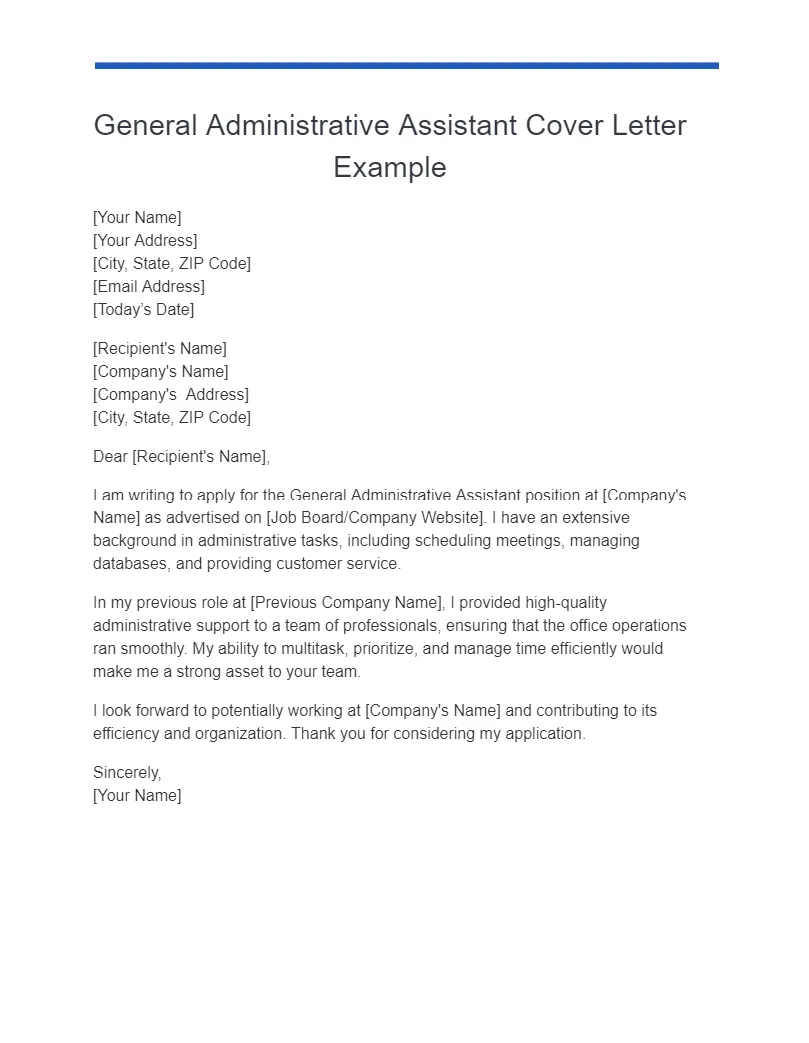
Choose a professional font such as Times New Roman, Arial, or Calibri. Use a font size between 10 and 12 points for readability. Use a simple, clean layout with clear headings and subheadings. Keep your paragraphs concise and use bullet points to highlight key information. Use white space effectively to make the cover letter easy to read. Avoid using overly fancy or distracting formatting. Make sure your margins are consistent and that your text is aligned correctly. A well-formatted cover letter will make a positive impression and show that you are detail-oriented. Remember, the goal is to make your cover letter easy to read and visually appealing.
Using Action Verbs and Keywords
Use action verbs to make your cover letter more dynamic and engaging. Start your sentences with strong verbs that describe your accomplishments and responsibilities. Keywords are also important. Integrate relevant keywords from the job description into your cover letter. This can help your application get noticed by applicant tracking systems (ATS) and also show the hiring manager that you have the skills and experience they are looking for. Make sure your keyword use is natural and not forced. A well-written cover letter will show the hiring manager that you understand their needs and can contribute to their success.
Proofreading and Editing Your Cover Letter
Proofreading and editing your cover letter is the final step in the writing process. It is essential to catch any errors and ensure that your cover letter is polished and professional. Read your cover letter carefully, looking for typos, grammatical errors, and formatting mistakes. It is also a good idea to have a friend or family member proofread your cover letter. They may catch errors that you have missed. Make sure the tone and language are appropriate for the job you are applying for. A well-proofread and edited cover letter will show that you pay attention to detail and are committed to presenting yourself in the best possible light.
By following these guidelines, you can create an administrative assistant cover letter that grabs the hiring manager’s attention, showcases your skills, and increases your chances of landing an interview. Good luck with your job search!
